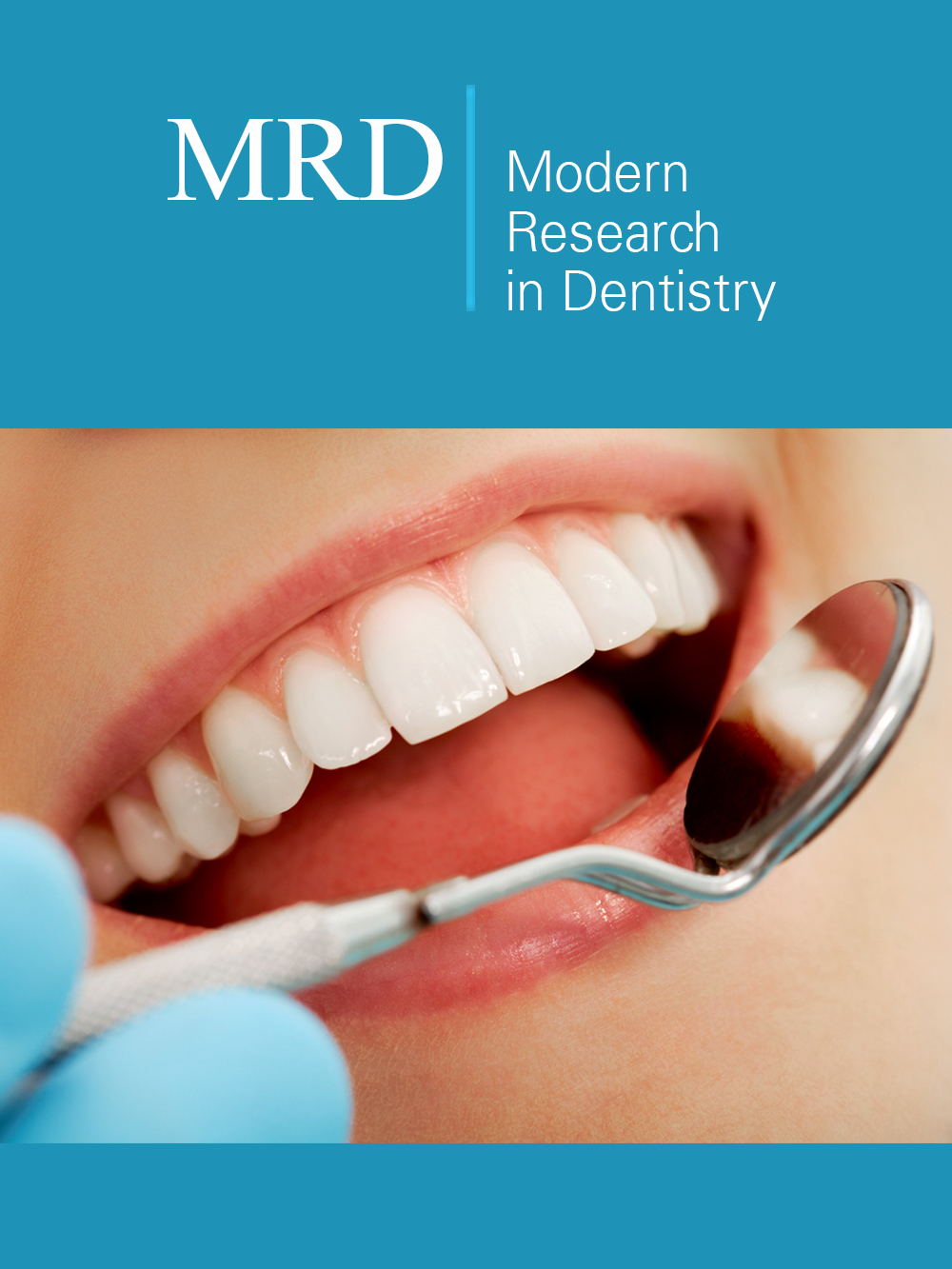- Submissions

Abstract
Modern Research in Dentistry
Dental Malpractice: Risk Factors, Causative Trends, Damages Assessment and Strategies for Prevention
-
Open or ClosePeter E Murray1*, Mohamad Elazizi2 and Franklin Garcia-Godoy3
1Oak Brook College of Law, California, USA
2Private Dental Practice, Florida, USA
3College of Dentistry, University of Tennessee Health Science Center, Memphis, Tennessee, USA
*Corresponding author: Peter Murray, Oak Brook College of Law, California, USA
Submission: April 07, 2025;Published: April 16, 2025

ISSN:2637-7764Volume8 Issue2
Abstract
Introduction: Dental malpractice poses significant risks to patient safety and exposes practitioners
to considerable legal and financial liability. This study provides a comprehensive analysis of dental
malpractice claims, examining risk factors, causative trends, damage estimates and key preventive
strategies. It represents the first investigation to quantitatively assess legal malpractice cases in dentistry,
offering novel insights into the most frequently reported clinical errors and their underlying causes.
Materials and methods: Dental malpractice cases were identified using the Google Scholar case law
database, applying targeted search criteria that included patient demographics, health status, type of
dental facility, dental specialty, causes of malpractice and the nature of legal claims. The analysis focused
on detecting patterns in malpractice allegations and determining the most cited legal grounds, providing
a data-driven understanding of liability trends within dental practice.
Result: The results revealed that treatment failures were the leading cause of dental malpractice claims
(56%), followed by medication-related issues (22%), diagnostic errors (15%) and communication
failures (7%). Most cases involved otherwise healthy pediatric patients and occurred during diagnosis,
treatment, or post-treatment care. Incidents of dental malpractice were most reported in hospitals,
clinics and correctional facilities. Interestingly, a greater number of claims were filed against physicians
and healthcare administrators than against dentists themselves. Among dental specialties, the highest
frequency of malpractice claims was associated with surgical procedures, public health dentistry, and
oral and maxillofacial surgery. The most frequently cited legal grounds for these claims included general
malpractice, negligence, breach of contract, and wrongful death. The average compensation awarded in
dental malpractice cases was approximately $136,000, with the highest recorded award reaching $261
million in a wrongful death case.
Conclusion: Dentists should maintain comprehensive malpractice liability insurance to ensure
equitable compensation for patients in the event of injury, while also safeguarding themselves against
the potentially severe financial consequences of legal action. Enhancing patient safety necessitates
targeted efforts toward protecting vulnerable populations, particularly children, and improving the
quality of dental care in hospital-based settings. The findings from this study suggest that approximately
two-thirds of dental malpractice claims could be mitigated by increasing treatment success rates and
ensuring prompt retreatment to minimize patient harm, pain and suffering. Nearly one-quarter of
claims may be avoided through careful verification of prescribed medications, particularly about dosage
accuracy and contraindications. Additionally, diagnostic errors account for roughly one in seven claims,
emphasizing the need to strengthen diagnostic precision and clinical decision-making. Finally, one in
twelve malpractice claims could potentially be prevented through improved communication and patient
engagement, highlighting the pivotal role of clear, empathetic dialogue in building patient trust and
promoting safe, effective care.
Keywords:Dentist; Dental; Malpractice; Negligence; Mistakes; Errors; Lawsuit; Failed; Risks; Damages
 a Creative Commons Attribution 4.0 International License. Based on a work at www.crimsonpublishers.com.
Best viewed in
a Creative Commons Attribution 4.0 International License. Based on a work at www.crimsonpublishers.com.
Best viewed in 







.jpg)






























 Editorial Board Registrations
Editorial Board Registrations Submit your Article
Submit your Article Refer a Friend
Refer a Friend Advertise With Us
Advertise With Us
.jpg)






.jpg)














.bmp)
.jpg)
.png)
.jpg)










.jpg)






.png)

.png)



.png)






